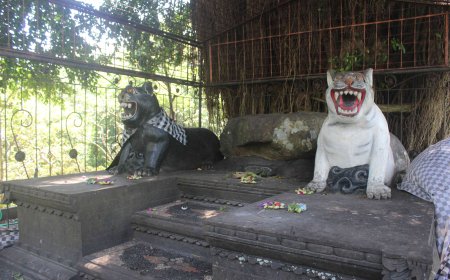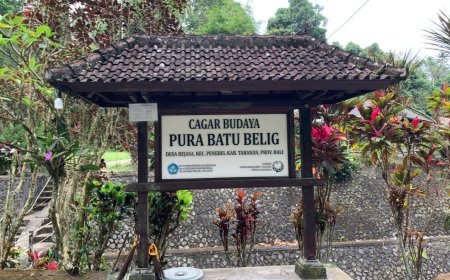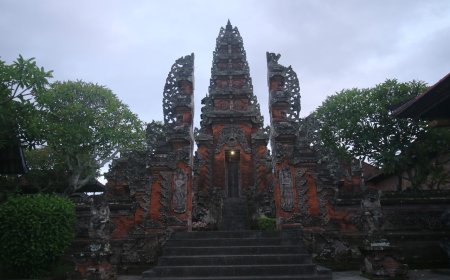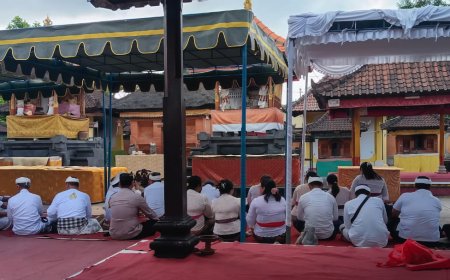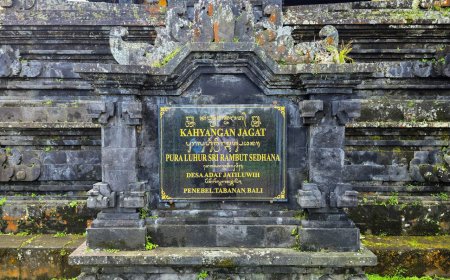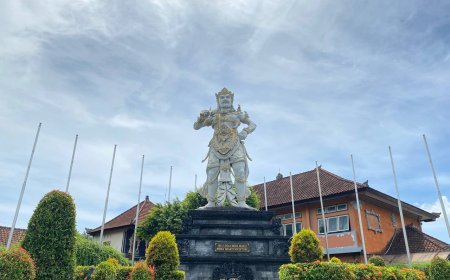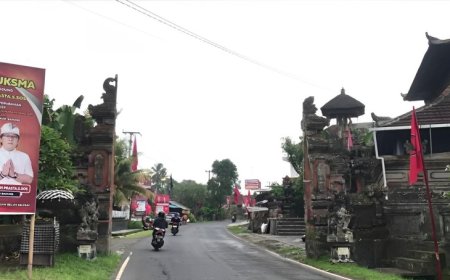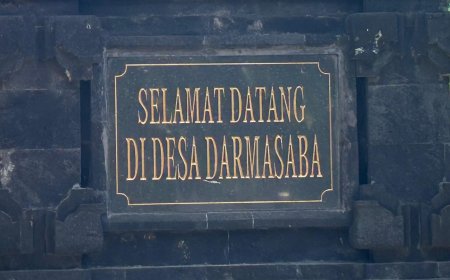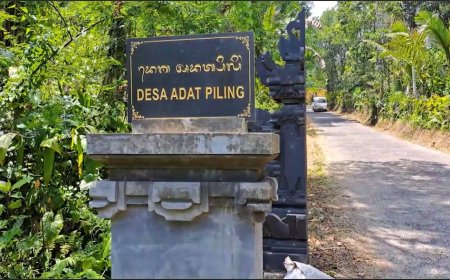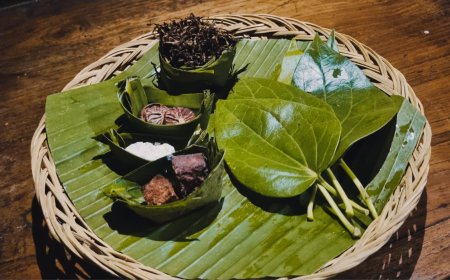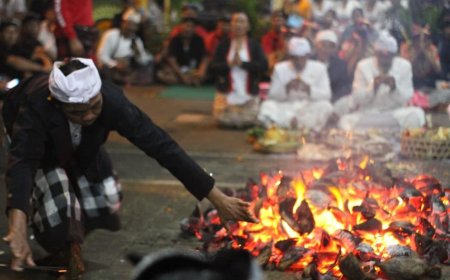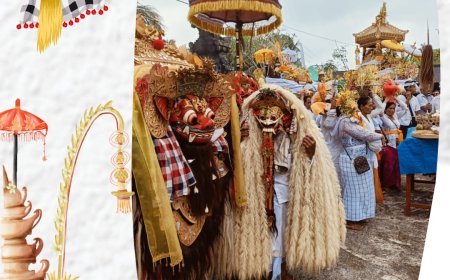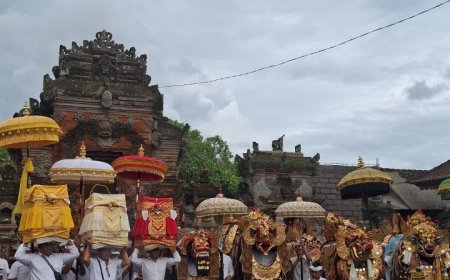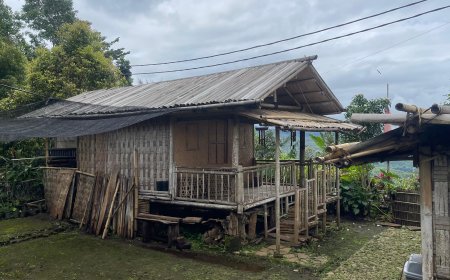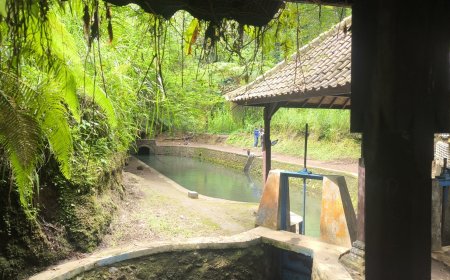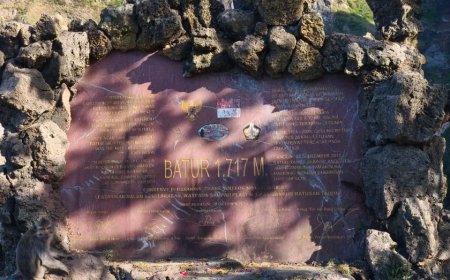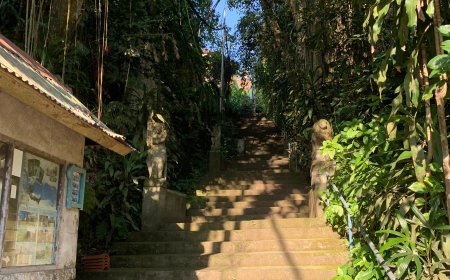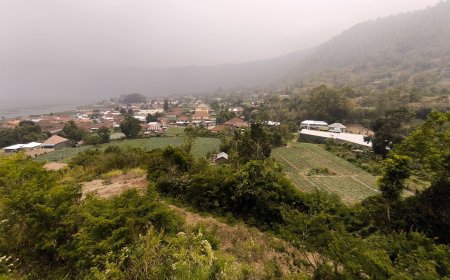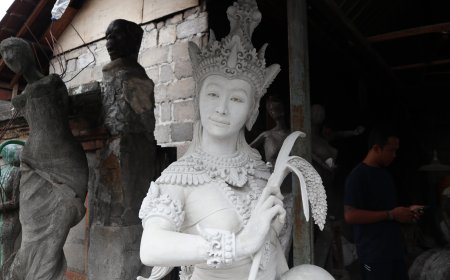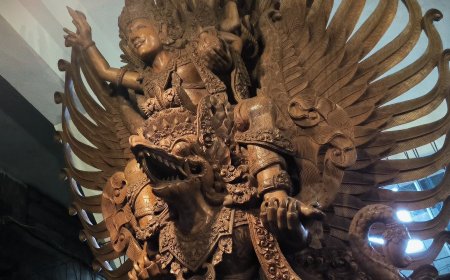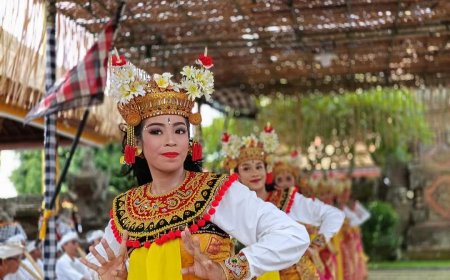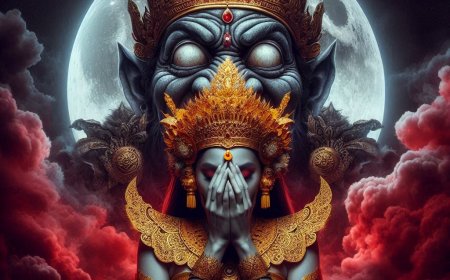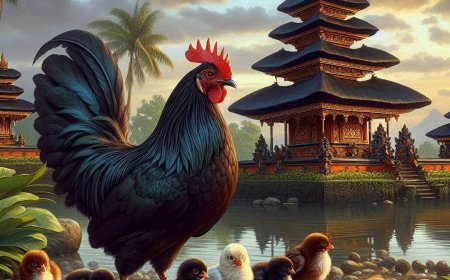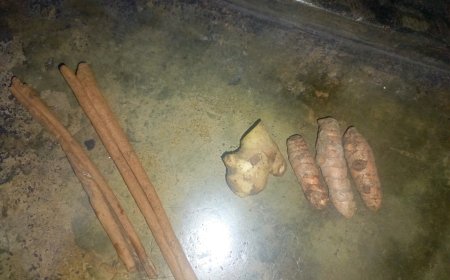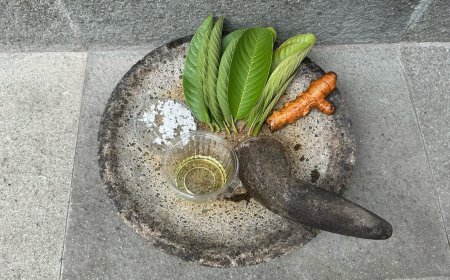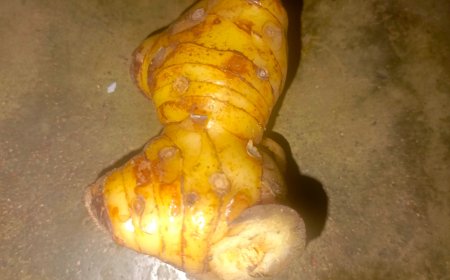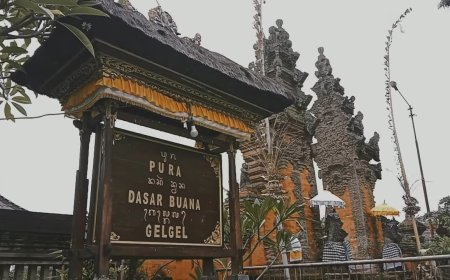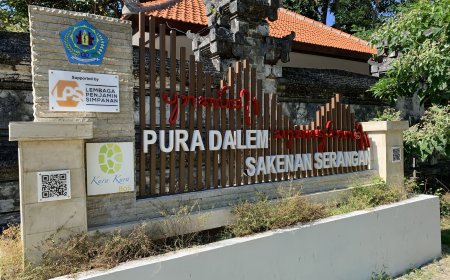Siwa Dampati Temple: A Historical Heritage Manifesting the Union of Lord Siwa and Goddess Durga
With unique elements such as the Gedong Siwa Dampati, and traditional carvings depicting Hindu mythological tales, the temple is not only a sacred place of worship but also an appealing heritage destination. Its annual ceremonies and well-preserved traditions enrich the spiritual significance of this temple, making it a symbol of harmony between humans, nature, and the Divine amidst Bali's modernization.

Siwa Dampati Temple, located on Jalan Danau Buyan, Banjar Taman Sari, Intaran Village, Sanur, Denpasar, is a religious site rich in history and spirituality in Bali. Built between the 18th and 19th centuries, the temple preserves the authenticity of traditional architecture by utilizing red bricks as its primary material. Its existence is closely intertwined with Griya Gede Taman Intaran as the temple caretaker and Banjar Taman Sari as the main worshippers, creating a synergy between the local community and ancestral heritage.
The name "Siwa Dampati" holds profound meaning. In Sanskrit, "Dampati" refers to a married couple who are inseparable. In the context of this temple, the term symbolizes the union of Lord Siwa with his Shakti, Goddess Durga, who is often revered as Goddess Parwati in Bali. This symbolic union reflects harmony and balance between masculine and feminine forces, making the temple not only sacred but also rich in spiritual philosophy. In Hindu tradition, this union represents the cosmic balance that complements the universe.
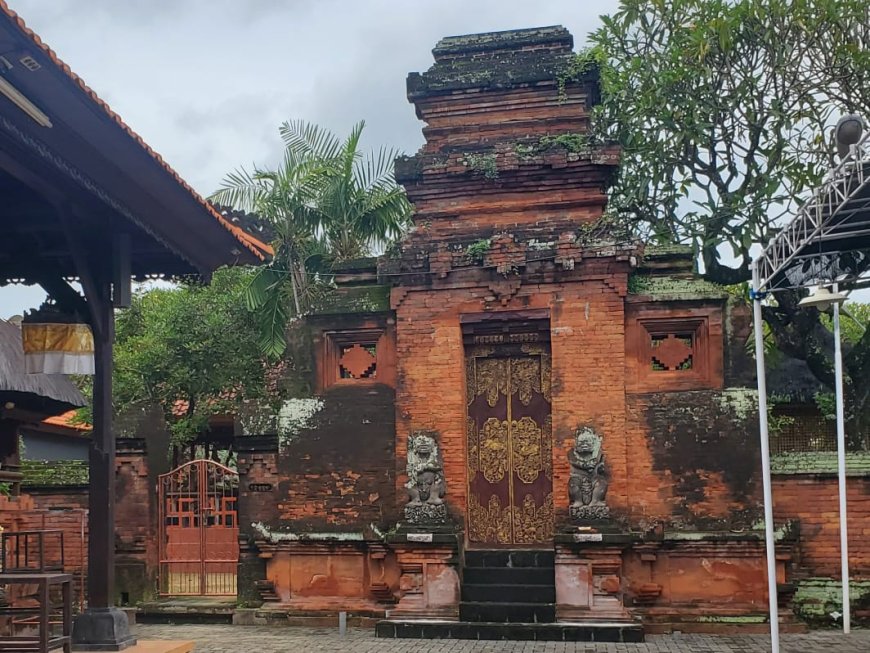
The Main Entrance Gate of Siwa Dampati Temple (Photo Source: Private Collection)
The structure of Siwa Dampati Temple is divided into three main sections: nista mandala (outer courtyard), madya mandala (middle courtyard), and utama mandala (inner sanctum). The nista mandala serves as a transitional space from the outside world to the sacred site. The madya mandala represents the realm of the gods, while the utama mandala is the holiest area used for the main religious activities. Each section carries symbolic significance, representing the concept of Bhur, Bwah, and Swah Loka in Hindu cosmology. This layout reflects the harmony between humans and the universe, as well as respect for spiritual hierarchies.
Within the utama mandala lies the Gedong Siwa Dampati, the main shrine for worship. This structure serves not only as the center of worship but also as a repository of spiritual energy believed to be a source of harmony for Hindus. Additionally, the grand candi kurung or Kori Agung gate connecting the madya mandala and utama mandala is adorned with intricate traditional carvings. These carvings depict not only the beauty of Balinese art but also epic tales from Hindu mythology, such as the Ramayana and Mahabharata. The presence of Dwarapala statues, guardians of the temple, and statues of priestly figures add to the uniqueness of the site. Supporting structures like the Bale Tajuk, used for meetings, the Bale Gong for storing gamelan instruments, and a well for sacred water complete the temple complex, making it a place of worship and a valuable heritage site.
The temple layout aligns with the Tri Hita Karana philosophy, which emphasizes harmony between humans and God, humans and fellow beings, and humans and the environment. The presence of lush greenery around the temple enhances the sacred atmosphere while providing tranquility to visitors.

The Middle Courtyard of Siwa Dampati Temple (Photo Source: Private Collection)
Religious ceremonies at Siwa Dampati Temple are among its main attractions. The temple's piodalan (anniversary) is celebrated annually during Purnamaning Sasih Kapat, typically falling in September or October. Additionally, ceremonies for the Sasuhunan Tapakan Barong and Rangda are held every six months on Saniscara Wuku Wayang (Tumpek Wayang). These traditions reflect the community's deep respect for ancestral heritage and the spiritual values of Balinese Hinduism. During ceremonies, the temple atmosphere is filled with the scent of incense, the melodic sound of Balinese gamelan, and worshippers in traditional attire carrying offerings, creating an immersive spiritual experience.
For tourists, Siwa Dampati Temple offers a unique experience. Its distinctive architectural beauty, well-preserved religious traditions, and deep spiritual meaning make it a must-visit heritage destination. Elements like the Gedong Siwa Dampati, candi kurung, and guardian statues attract not only Hindu worshippers but also tourists interested in exploring Balinese culture and history. As an active place of worship, visitors are encouraged to follow local customs and norms to maintain the temple's sanctity.
The presence of Siwa Dampati Temple plays a significant role in promoting culture-based tourism in Bali. Many domestic and international visitors come to admire its architectural splendor, learn about the philosophy behind its construction, and experience the spiritual energy emanating from this site. With proper care by the local community, the temple remains a sacred site that radiates harmony among humans, nature, and the Creator. Siwa Dampati Temple serves not only as a place of worship but also as a symbol of harmony between Lord Siwa and Goddess Parwati. Through its blend of architectural artistry, spiritual values, and rich traditions, the temple is a living cultural heritage amidst modernity. Through visits and preservation efforts, both the community and visitors can work together to maintain the grandeur of Siwa Dampati Temple as a sacred site rich in history and culture.
